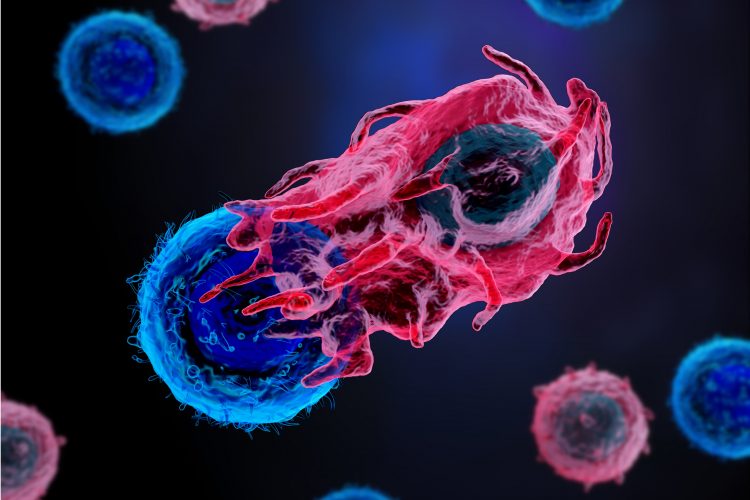Researchers develop novel class of cancer immunotherapy
Posted: 30 October 2020 | Hannah Balfour (Drug Target Review) | No comments yet
The scientists developed a therapy which uses nanobiologics to train the innate immune system to recognise and combat cancer cells.


Researchers have developed a new type of cancer immunotherapy that uses nanobiologics to train the immune system to eliminate tumour cells. Nanobiologics are tiny materials bioengineered from natural molecules.
The lead candidate, called MTP10-HDL, was developed and tested on murine models of melanoma by scientists at the Icahn School of Medicine at Mount Sinai, US.
The nanobiologic immunotherapy targets the bone marrow, where cells that form part of the innate and adaptive immune system originate from, and activates a process called trained immunity. This process reprogrammes bone marrow progenitor cells to produce “trained” innate immune (myeloid) cells that can halt the growth of cancer. Tumours are usually protected from the immune system by immunosuppressive cell types, such as T regulatory cells.
According to the team, this is the first time that trained immunity has been safely and successfully induced for the treatment of cancer. The team suggested their novel nanobiologic therapy could be used as a stand-alone therapy or in conjunction with existing immunotherapies, such as checkpoint inhibitors, to combat cancer.
“Not only have we observed very strong anti-cancer effects of our nanobiologic immunotherapy,” said lead author Dr Willem Mulder, Professor of Diagnostic, Molecular and Interventional Radiology and member of the Biomedical Engineering and Imaging Institute at the Icahn School of Medicine at Mount Sinai. ” Our study is a significant advancement for both trained immunity and cancer treatment, with real potential to move quickly into use in patients.”
The researchers concluded that their technology could be a ‘game changer’ in the field of cancer immunotherapy and that they are continuing to explore its potential.
The paper was published in Cell.
Related topics
Biologics, Drug Development, Drug Leads, Immunooncology, Immunotherapy, In Vivo, Therapeutics
Related conditions
Cancer
Related organisations
Icahn School of Medicine at Mount Sinai in New York
Related people
Dr Willem Mulder


